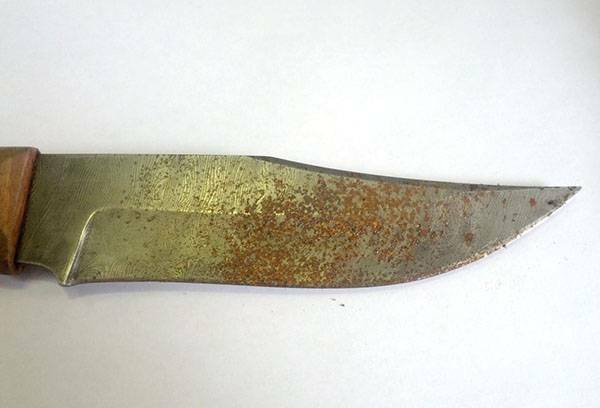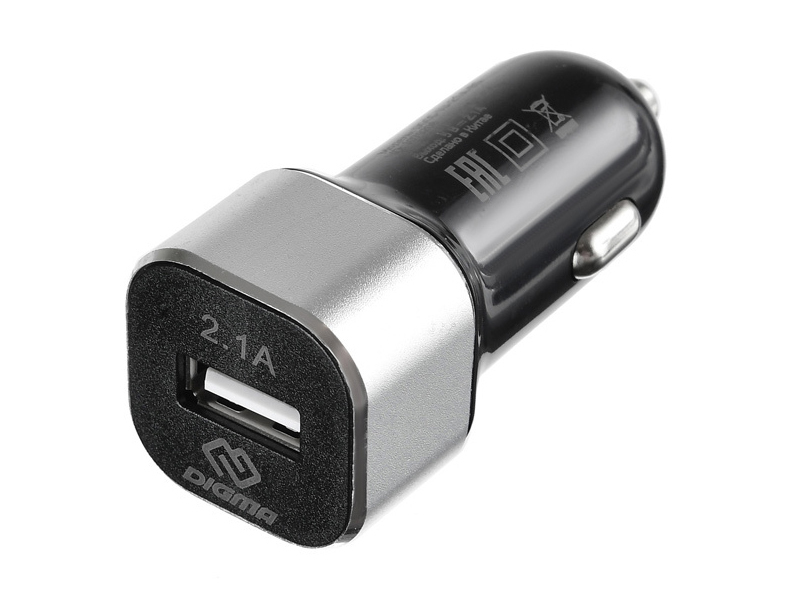Contents:
- Chemical properties of rust
- Mechanism of corrosion traces removal
- Application of alternative methods
- Corrosion prevention measures
To prevent rusting of the knife, it must be protected from moisture and periodically cleaned. This is a common truth, but it is not always possible to observe such simple at first glance terms. The knife can be forgotten or lost somewhere, and after a while it is already rusty to find. As a rule, the blade suffers in this case. Handles made of metal are rarely made, but this is also found. There is a mass of ready chemical compounds for removing rust( corrosion), you can do with improvised means, especially if the object is not severely damaged.

Chemical properties of rust
In order to understand the principle of action of rust removing agents, it is necessary to know what it is by its nature. In chemical terms, this is iron( III) hydroxide, an insoluble base neutralized by acid. Therefore, in order to remove stains of rust from the blade of the knife, it is necessary to treat it with a substance containing acid. Of the familiar tools at hand, you can recall:
- potatoes( contains oxalic acid);
- onion( various organic acids);
- vinegar( acetic acid).
There are other options with which you can get rid of this trouble. Much depends on how bad the damage is. Maybe it's a light coating, and perhaps corrosion has already formed serious shells on the smooth surface of the blade. Anyway, in order to clean the knife from rust, remove existing stains and protect it from the appearance of new stains, it is necessary to go through all the stages of the procedure.

Mechanism for removing traces of corrosion
First of all, we need to assess the condition of the knife, the degree of corrosion damage. The entire procedure consists of the following steps:
- act on the steel elements of the knife with an acid-containing substance( or special agent);
- remove traces of rust from them;
- clean blade;
- should be treated with oil or wax to protect against re-spoilage.
If corrosion formed on the surface of the shell blade, then it may be necessary to resort to processing with fine sandpaper followed by polishing. However, consider the mechanism in more detail.
Advice
Throughout the process, water can not be used, special solutions, cleansing compounds, etc. should be used.
Finding the rust on the knife blade requires the following. To begin, mechanically remove all impurities, carefully wiping the knife with a rough rag, after moistening it with a cleaning liquid. Then the liquid must be applied to the blade, soak the rag with it, wrap the knife and leave it in this position for several hours. As such a cleanser, you can use vinegar or kerosene, or you can buy a special compound, such as a rust converter.
After this time, it is necessary to deploy the knife and remove all excess with the help of steel wool. After this, it must be wiped with a coarse cloth soaked in oil, cleaned to a full gloss. To protect the knife from repeated corrosion damage, it must be covered with a protective agent, for example, oil or wax, after which it should be monitored, periodically cleaned, lubricated and regularly applied.
What if I find out that I could not completely remove the stains? In this case, the procedure should be repeated. You can try to remove rust in other ways, which, fortunately, abound.

Aspirin can help remove rust from a knife
Use of alternative methods
One way - as mentioned earlier - is to remove rust using potatoes. Everything is simple. To remove traces of corrosion from the knife, it must be stuck in the potato and left in it for a day. Then remove the gun, rub it with a rough cloth soaked in oil. In not the most neglected cases, this is a fairly effective tool. The oxalic acid contained in the potato reacts with iron hydroxide, neutralizing it. In the same way, the process of steel cleaning from rust with the help of onions proceeds. In this case, the onion is applied onion juice and is aged for several hours, after which it should be removed together with the peeled rust.
You can remove stains of rust in exactly the same way, using lemon juice or vinegar, apply even ketchup for this. The principle of operation is identical to those described above. Some successfully solve this problem with soda water. There is an opinion that "Coca-Cola" is especially suitable for these purposes, since it contains phosphoric acid. It is necessary to lower the knife in a container with a drink for several hours, then remove it and remove the rust with a metal brush or washcloth. In the end, polish the blade and protect it from moisture using oil, wax or special tools.
In the fight against rust in the course are sometimes the most unexpected things, for example, "Alka-Seltzer" or aspirin. Several tablets are dissolved in a small amount of water and the blade of the knife is dipped into the solution for a quarter of an hour, then the surface is rubbed with a coarse cloth and the knife is processed, as in all other cases, in order to protect it from further damage.
What to do with a rusty object and how to remove stains from it, what method to use it for - to decide the owner of the knife. Buy ready-made tools, perhaps the most win-win option, but experiment with alternative methods is still worthwhile, especially if the case is not too neglected. The main thing after that is not to allow the repeated occurrence of rusty spots, since some of them can be easily removed. In this issue, prevention is everything.

Corrosion Prevention Measures
They say that the knife blade does not rust, they need to use it more often. This expression is not without meaning. The knife, which is in constant use, is regularly wiped, processed, and visible. Meanwhile, the stored and unused specimen is subject to the risk of corrosion damage to no lesser extent. If you forget about it for a while and do not do the treatment and cleaning of the metal parts, then it will rust almost certainly. The fact is that moisture is contained everywhere, including in the air. Gradually settling on the surface of the blade, it will inevitably lead to the oxidation of iron. Protective compounds, by the way, can not maintain their qualities for an indefinitely long period, they must be periodically removed, cleaned and reapplied.
Many owners of professional and hunting knives avoid preventive oil treatment. It is believed that the oil is able to enter into additional interactions with various substances and damage the steel. In this case, the wax has established itself as a more reliable means. In addition, the knife, which is used from time to time, should not be stored in a sheath or scabbard. Any unfavorable conditions, especially air humidity, in such a close space will be exacerbated, and the damage process will accelerate. In addition, you can skip the process by simply not seeing it. It is better to hide the knife when it comes time to take it with you on a journey, hunting, etc.
With the right approach and sufficient attention to the object of corrosion can be avoided. It is better to spend time on preventing a problem than on fighting it. Removal of rust and prevention of its appearance is a painstaking process that requires regularity. However, perhaps, this is one of the few cases when care of a thing gives pleasure and has a calming effect. Smooth, polished surface of the knife - the best reward to the owner for the effort.


